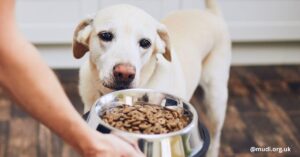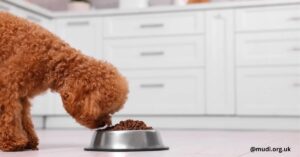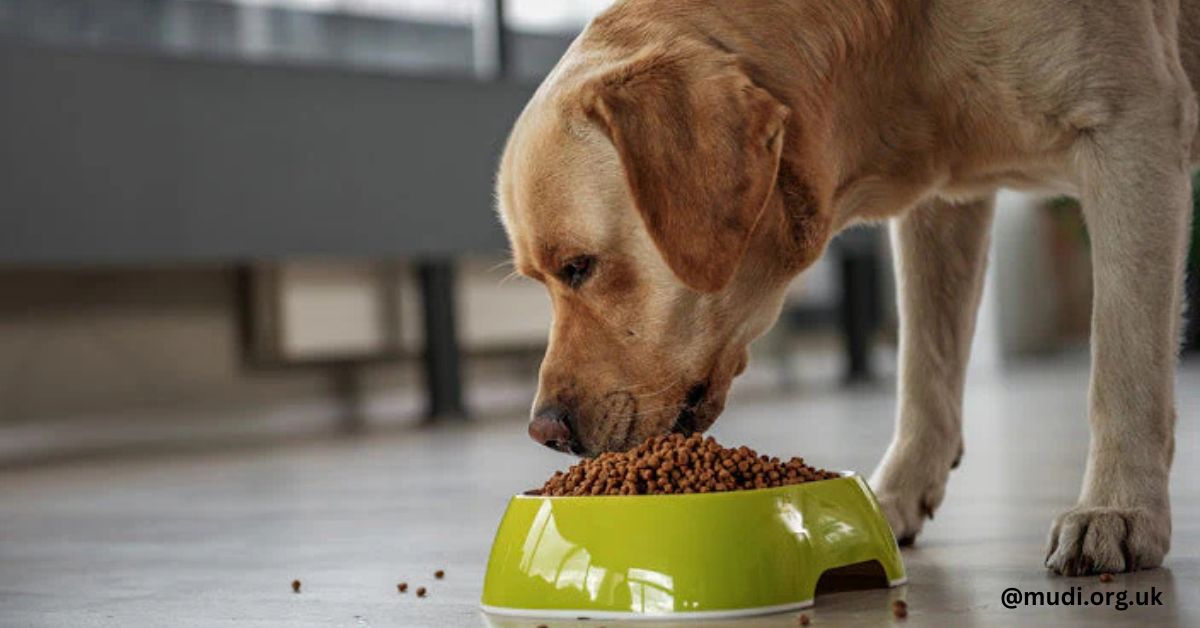Introduction
Does your puppy suffer from constant itching, digestive issues, or allergic reactions? Food allergies are common in young dogs and can lead to discomfort and health complications. Selecting the proper hypoallergenic dog food can help to avoid allergic responses and advance general well-being.
The benefits of the top hypoallergenic puppy food alternatives and what to find in an allergy-friendly diet are discussed in this manual. Also included are information on typical allergens, signs of food sensitivities, and advice on choosing the ideal food for your pet.
knowledge of allergic reactions to puppy food

Puppies’ food allergies are usually caused by proteins or grains that provoke immune responses. Common allergens are whey, beef, chicken, wheat, soy, and maize. Signs for observation:
- itchy skin or persistent ear inflammation.
- nausea, flatulence, or intestinal illness
- Thinning of fur or poor coat quality
protein sources, allergy symptoms, immune reaction, sensitive stomach, digestion health.
30% of puppies with skin problems had unknown food allergies, according to a study in Veterinary Medicine and Science published in 2023. Preventable long-term health issues can be averted by early intervention using hypoallergenic diets.
When their immune system erroneously recognizes certain food proteins as damaging, puppies might acquire allergies. This sets off an allergy response that results in symptoms like:
- letting problems (hair loss, rashness, redness, itchiness)
- Vomiting, nausea, bloating, flatulence, and diarrhea
- ear infections, either regular or persistent
- Especially paws: much chewing and licking
Commonly found dog food allergens Smith
Some compounds are more prone to provoking allergic reactions in dogs. These comprise:
- Chicken
- Beef
- Dairy
- Wheat and gluten.
- Along with eggs,
- Artificial flavors and preservatives
The best approach to avoiding these allergens is to choose specially formulated hypoallergenic puppy foods or limited-ingredient diets (LID).
Best Culinary-Free Puppy Foods.

1. Blue Buffalo Basics Limited-Ingredient Puppy Food
key characteristics:
- Turkey single animal protein
- Zero beef, dairy, eggs, or poultry
- Grain-free sweet potato for stomach behavior
- ·DHA aids in eye and brain growth.
Why It’s Great: This formula is intended for delicate puppies and has easily digested carbs, including peas and potatoes.
2. Hill’s Science Diet Puppy Sensitive Stomach & Skin Energy
key characteristics:
- Includes prebiotic fiber to support gut health
- Vitamin E and omega-6 fats balance for skin maintenance.
- No preservatives or artificial flavors
Why It’s Good: Veterinarily formulated, this food is a superb option for pups prone to allergies since it promotes good skin and digestion.
3. Canidae Pure Limited Ingredient Puppy Diet
key characteristics:
- Salmon is a unique protein.
- No wheat, artificial components, or soybeans
- Contain digestion probiotics
Why It’s Awesome: This food, grain-free and consisting of 8 primary components, helps to lower the likelihood of allergies and strengthen an immune system.
4. Pro Plan Sensitive Stomach Puppy Food by Purina
key characteristics:
- For easy digestion, salmon and rice formula
- ·Contains living probiotics
- Omega-3 fatty acids aid in vision and brain development.
Why it’s great: Meant for delicate bellies, it is perfect for dogs with food sensitivities and enhances immune response.
5. Royal Canin Vet Diet Hydrolyzed Protein Puppy Food.
key characteristics:
· To lower allergic responses, hydrolyzed proteins
· Have essential vitamins in balance.
· formula based on prescription levels
Why It Is Great: For a dog with serious food allergies, this vet-recommended diet guarantees top digestion and nutrient absorption.
Selecting the Top Hypoallergenic Puppy Food:

1. Search for Limited-Ingredient Diets (LID).
Reduced-ingredient foods lower the chances of allergic responses. One protein source and a few extra ingredients assist with allergy identification.
2. Use different protein sources.
Common proteins like beef or chicken are more inclined to cause allergies than less-conventional proteins, including salmon, duck, venison, or kangaroo.
3. Stay away from synthetic substances.
Pick foods free from artificial colors, flavors, and preservatives; these can cause allergic reactions and gastrointestinal problems.
4. Look at grain-free possibilities.
Grains like wheat and corn can bother a few puppies. A grain-free diet might have interesting signs.
5. Polish for added omega fatty acids and probiotics.
- Probiotics help to improve the immune reaction and food metabolism.
- Omega-3 and omega-6 fatty acids support coat and condition.
Change to a diet free of allergens.
Changing your puppy’s food should be accomplished slowly so as to avoid stomach upsets.
- Days 1-2 are 25 percent different food and 75 percent preparatory food.
- Days 3-4: 50 percent fresh food, 50 percent old food.
- Days 5-6: 75 percent fresh food, 25 percent older food.
- Day Seven: Absolutely new meals.
During the transition time, be watchful of any reactions in your young dog.
Other ideas for controlling food allergies in puppies.
- Before changing food, consult a veterinary doctor.
- Record reactions and symptoms using a food diary.
- Stay away from food with allergens and table scraps.
- Regularly look for hidden allergens on ingredient lists.
conclusion
Essential for the long-term health and well-being of puppies is finding the best hypoallergenic dog food. Choosing an alternative protein and gastrointestinal support limited-ingredient diet will enable your puppy to become strong and healthy while also preventing allergies.
Choose top-quality components, check labels closely, and see your veterinarian if necessary when picking the best food. Your pet will get the nutrients they need free of the possibility of allergic reaction from a well-balanced, hypoallergenic diet.

